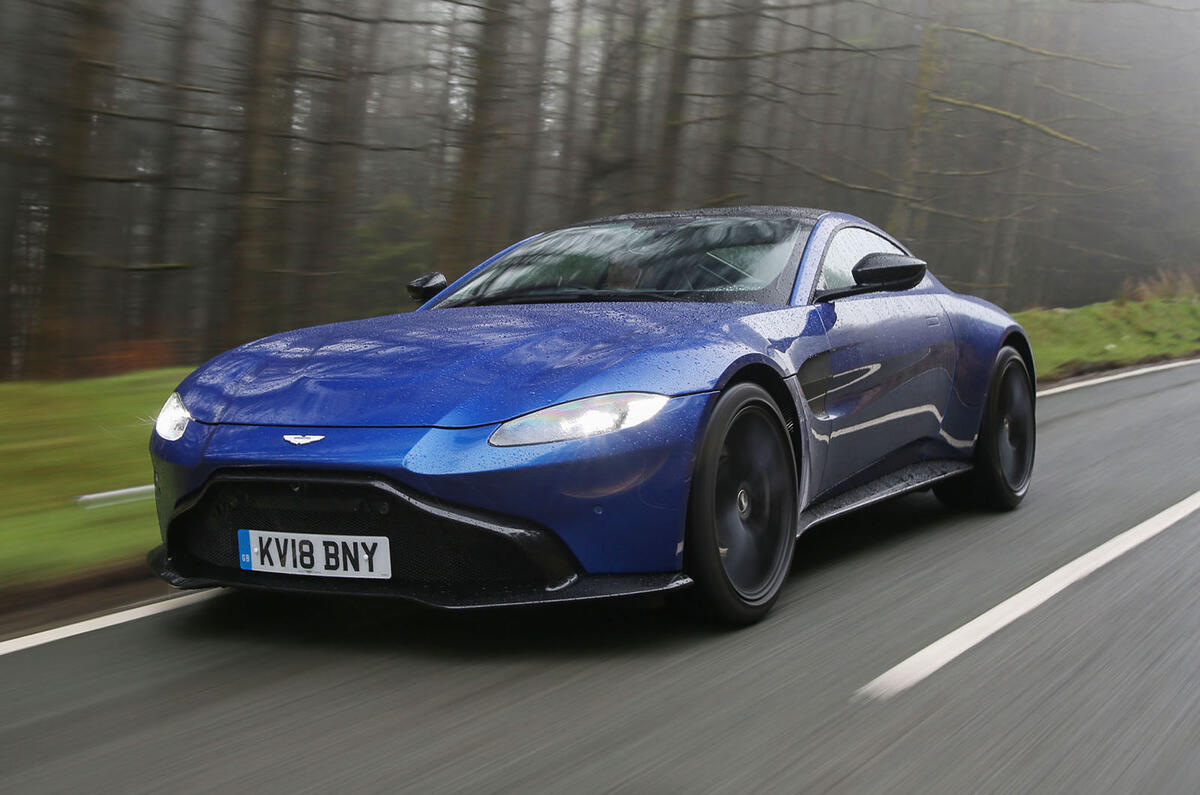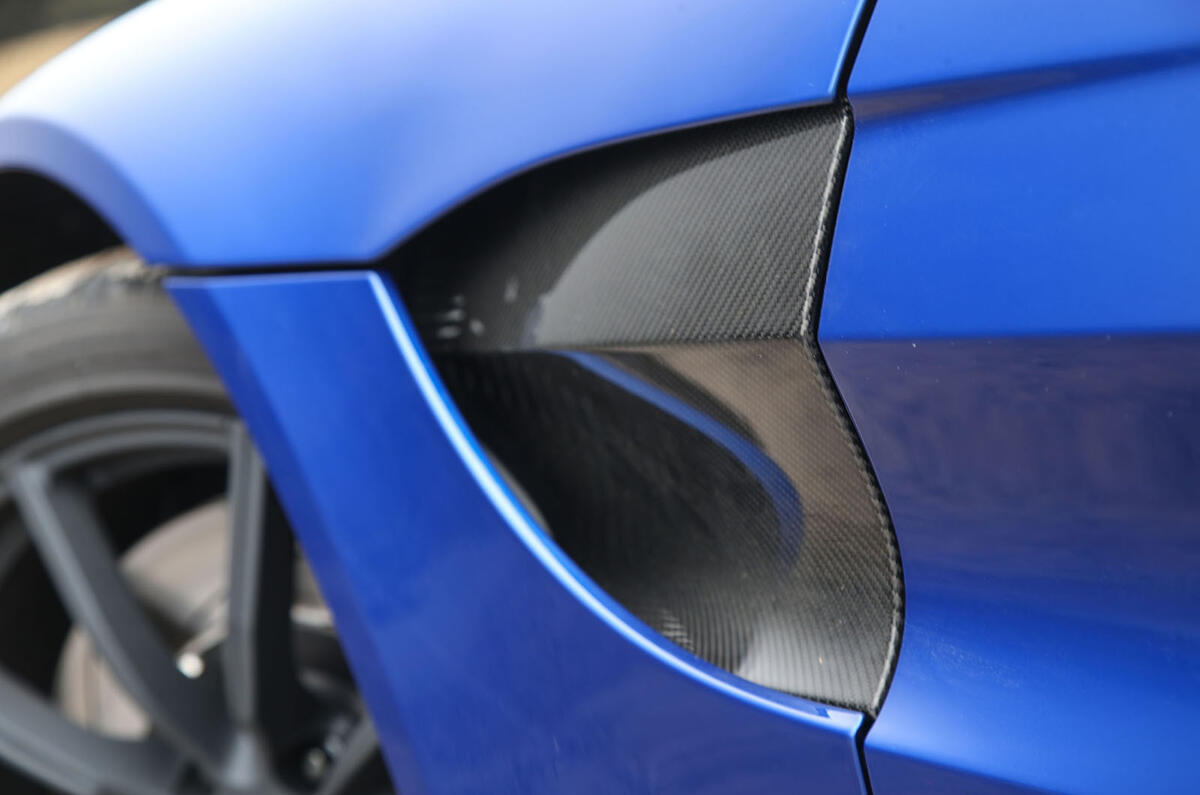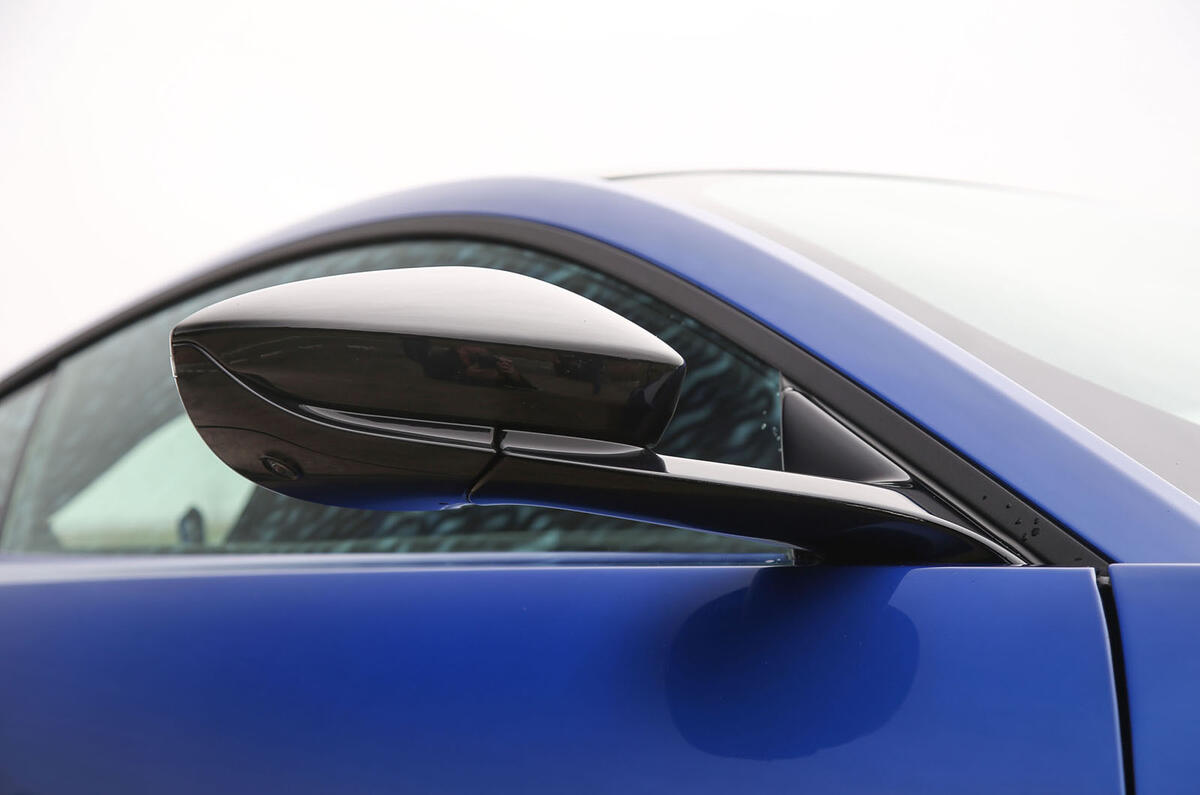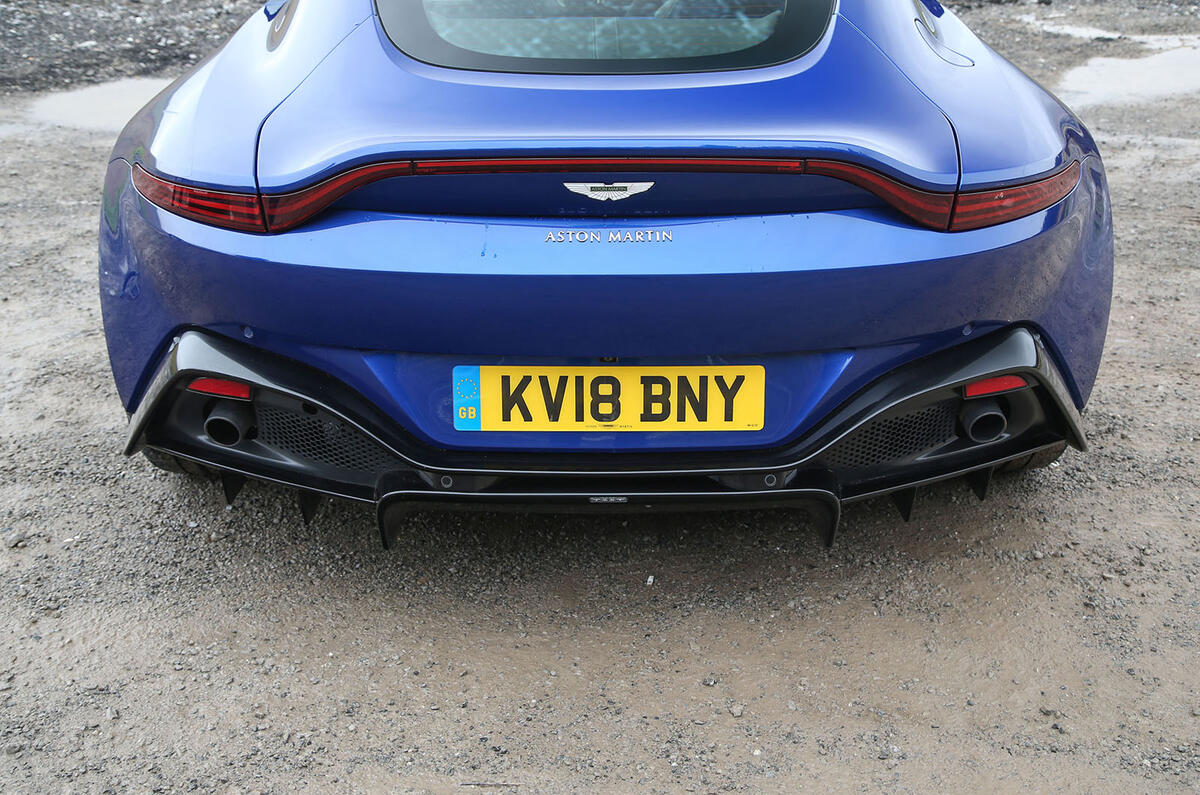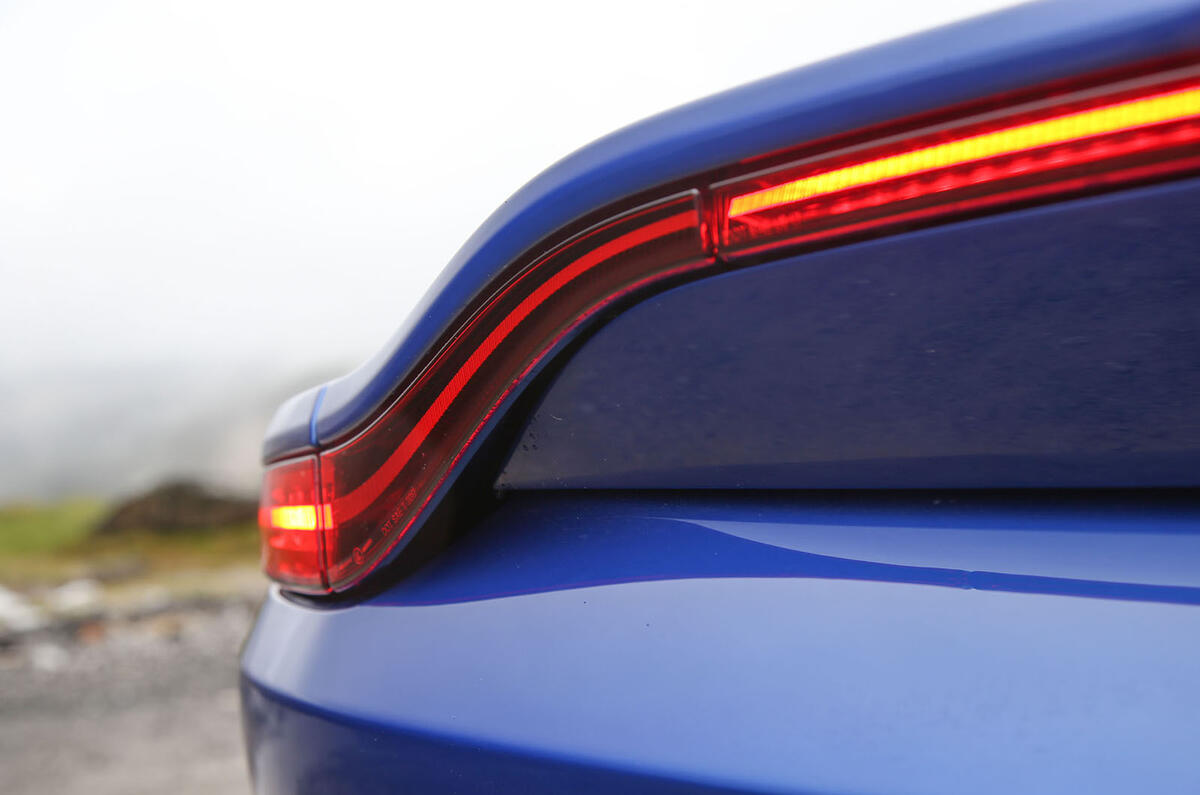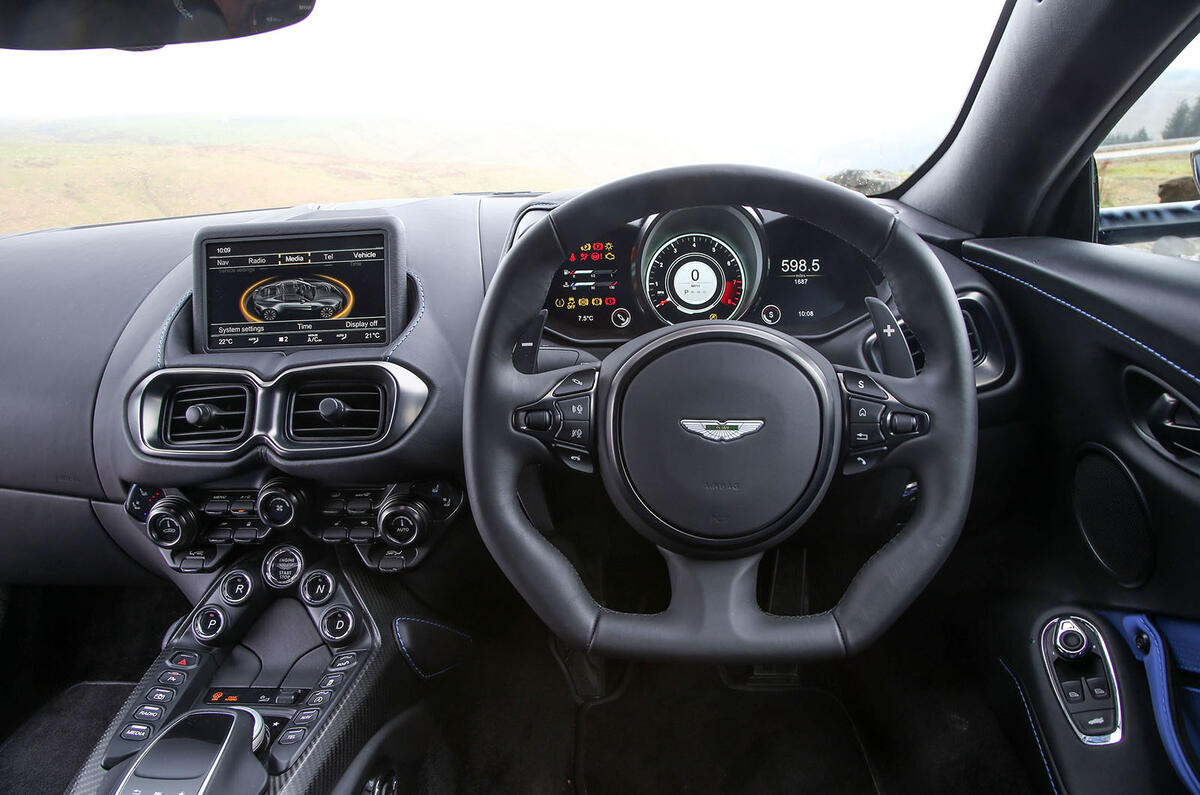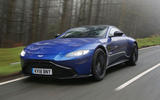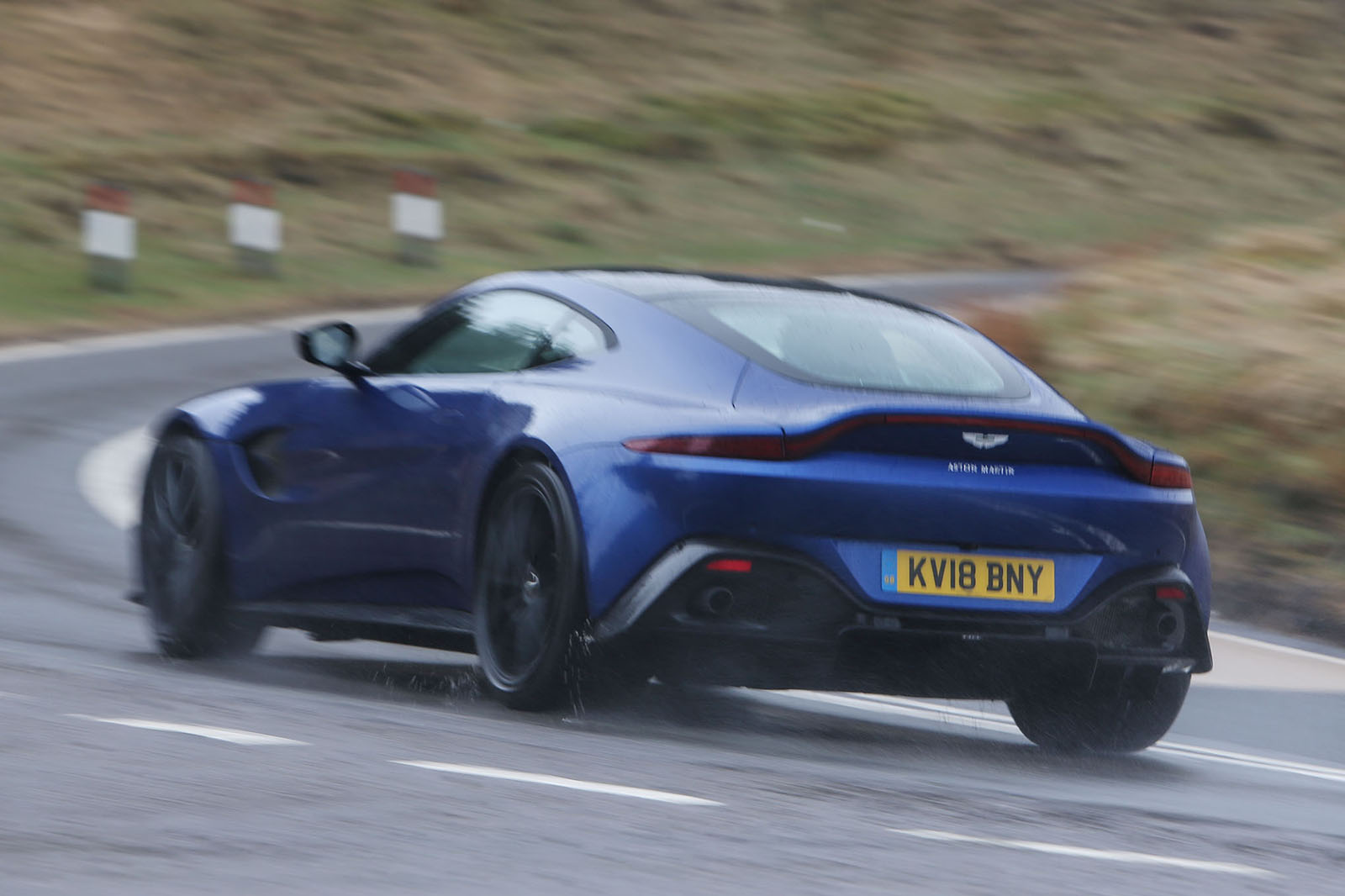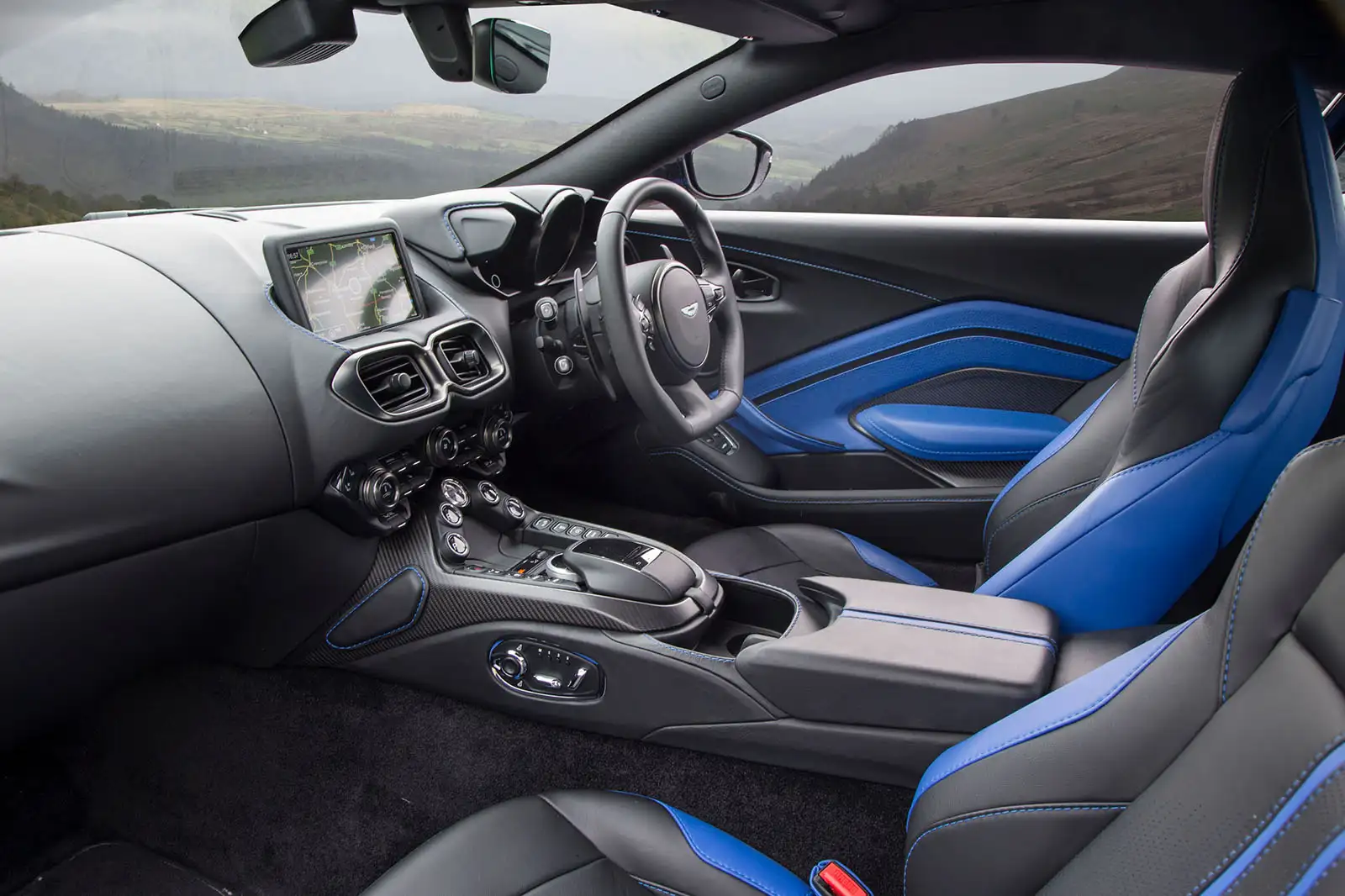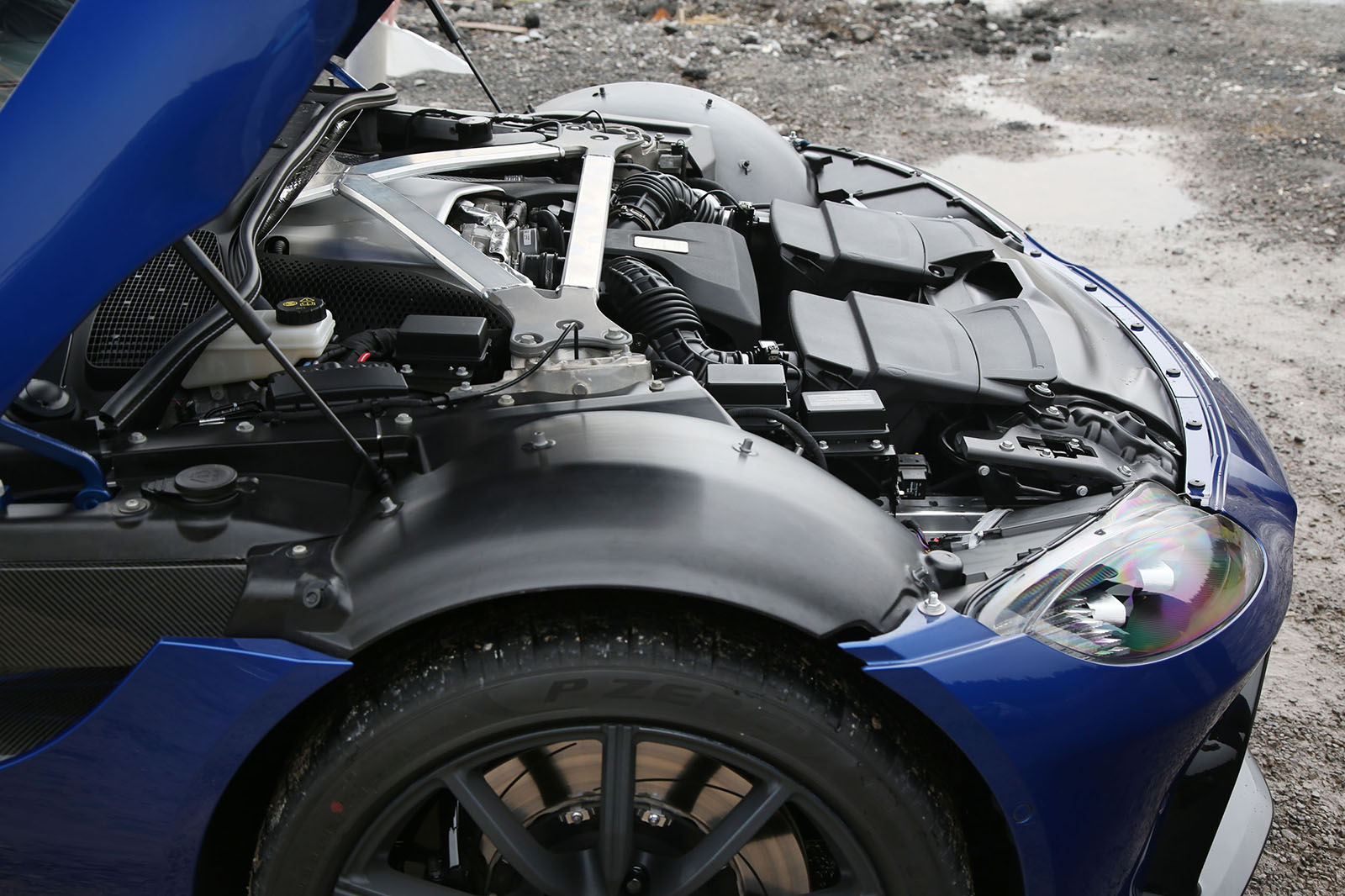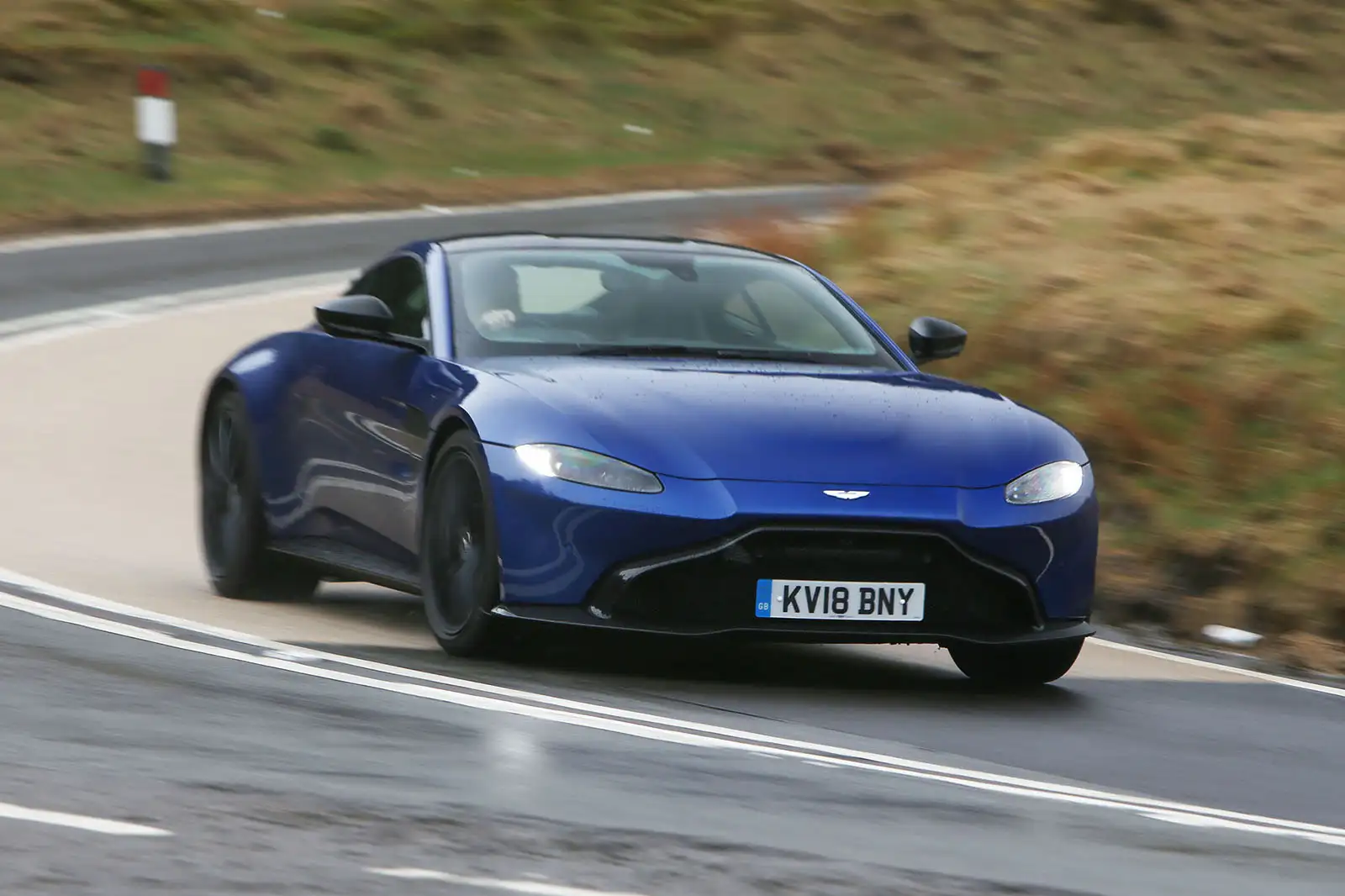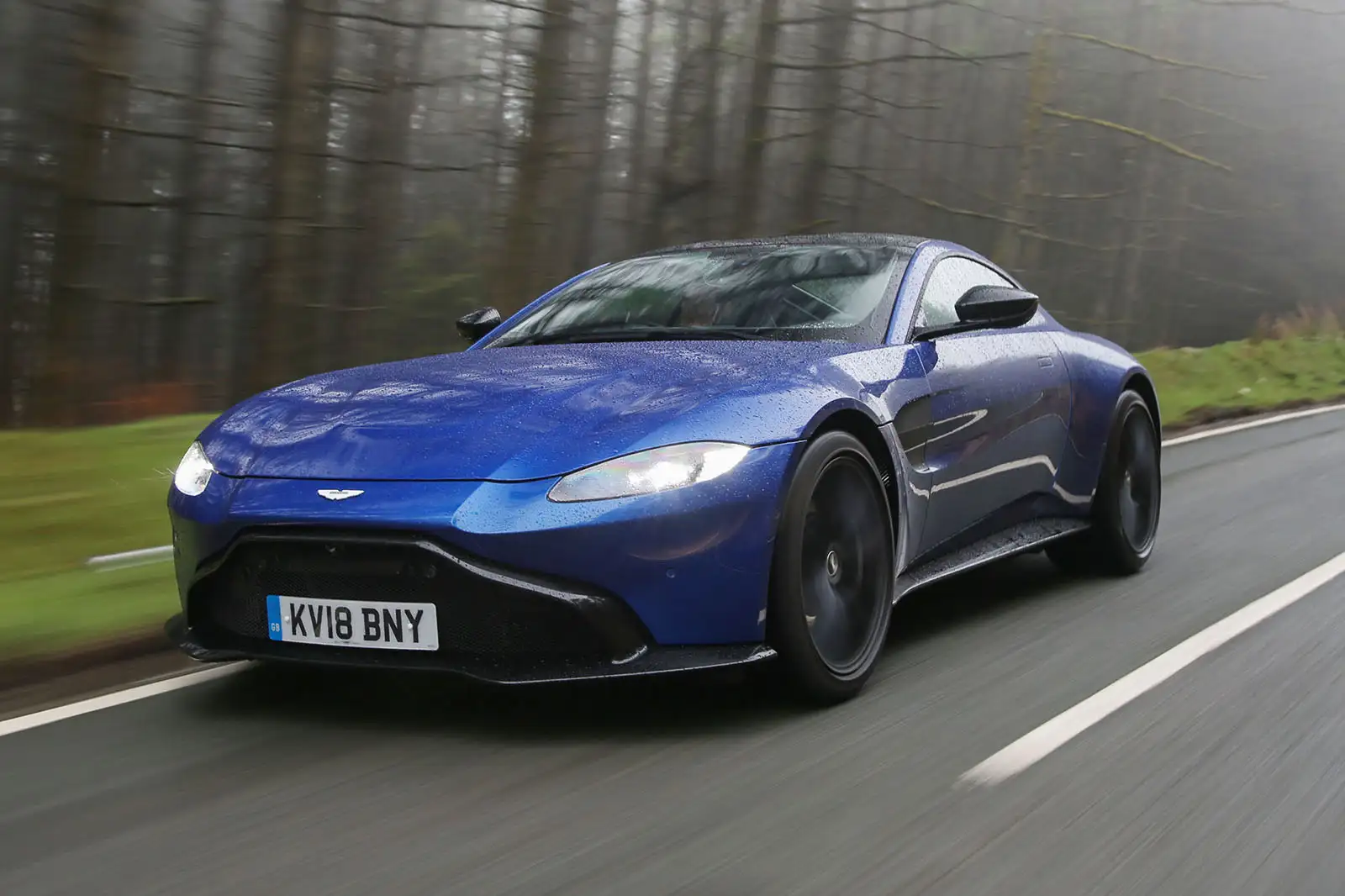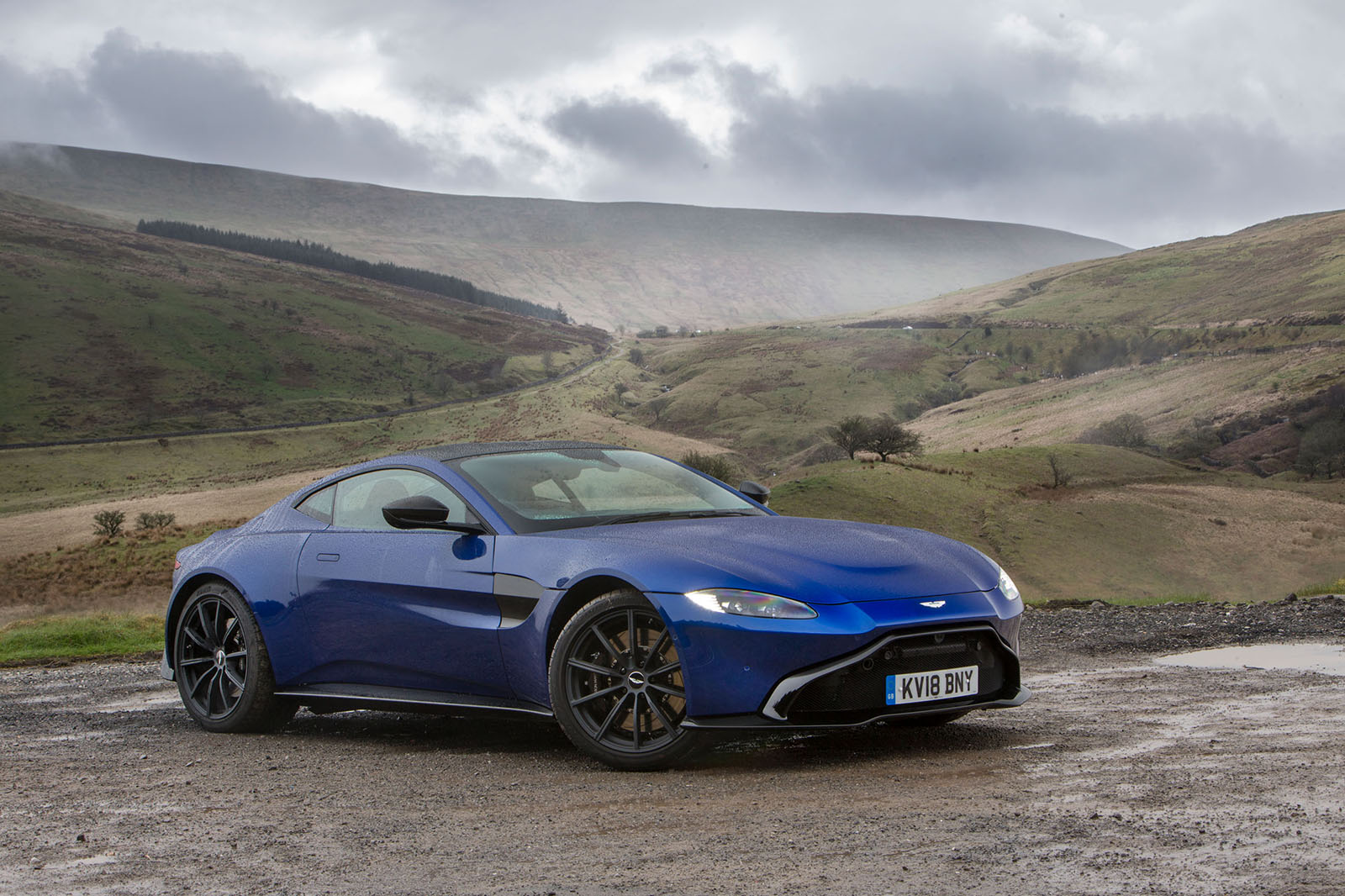You feel deeply rooted in the driving experience you’re about to have when you slide on board the new Vantage.
You felt as though you were perched on top of the last Vantage at the wheel but you nestle low and snug in the new one, with a steering wheel homing in towards your chest and a high shoulder line surrounding you.
Visibility takes a hit as a result. The Vantage’s scuttle can seem high, and its glasshouse slim and slightly obstructive compared with some rivals. The driving environment is a rich, luxurious and enticing one, though.
It’s also an interior that more discreetly integrates what switchgear and cabin architecture is sourced from the Daimler parts supply network than the DB11 manages, not least because it contains so much switchgear that we haven’t seen anywhere before.
Whereas the Aston Martin DB11’s heating and ventilation systems are controlled on a sleek touch-sensitive black panel on the car’s centre stack, the Vantage has an array of physical knobs and buttons presented in close proximity to the glass ‘engine start’ and transmission control buttons, the latter being set in an arrowhead shape at a more accessible level on the centre console than is the Aston-typical shoulder-level location.
Below, there are a couple of lines of quick-fire shortcut buttons for the infotainment system and easily accessible switches for the parking sensors, hazard warning lights, engine stop/start system and dynamic stability control. You needn’t go rooting around in infotainment sub-menus to manage the systems you’re likely to want most commonly to turn on or off. Thumbs up.
The Vantage’s 8.0in infotainment system is instantly recognisable as Daimler componentry — and those who know Mercedes cars well will also know that it’s not the best equipment the German maker offers. Merc’s bigger cars have later-generation systems with screens of up to 12.3in.
Still, it serves the Vantage pretty well. It isn’t a touchscreen, so you operate it with the touchpad for fingertip gesture (a cost option), a rotary input device and voice command; and because the voice recognition software is Mercedes tech, it works well.
You get navigation, a AM/FM/DAB radio tuner and Bluetooth media streaming as standard. Our test car had Aston’s standard-fit audio system, which sounded pretty powerful and clear, but a more powerful premium system is available at extra cost.
Storage is in plentiful supply in the shape of shelf-like interior door pockets, a good-sized armrest cubby and a shallow shelf behind the seats that can accommodate smaller bags and boxes.
The boot is easily accessed by a liftback-style hatch, is wide enough for a small set of golf clubs and can be expanded longways for larger cargo. All of which makes the Vantage one of the super-sports car class’s more usable constituents.



